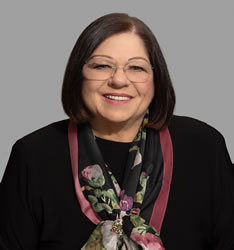The way imported products are sold has drastically changed over the past few years. With the rise of eCommerce and direct shipments to U.S. warehouses and customers, more and more counterfeit products are slipping into the U.S. Owners of brands and intellectual property are losing billions of dollars in revenue every year to counterfeiters that are selling bogus products, often at the same price or only slightly less than the true brand. It has become increasingly difficult to distinguish a counterfeit from the real thing.
Where do they come from?
 China is the largest source of counterfeit items - about 80% of imported counterfeits come from China. Eastern Europe, South America and the Middle East are also known sources of counterfeits. Using the latest manufacturing and printing technologies, counterfeiters are able to duplicate finishes, stenciling, print boxes, labels and security codes that mimic those on the genuine products. Many fakes are undetectable to the average person.
China is the largest source of counterfeit items - about 80% of imported counterfeits come from China. Eastern Europe, South America and the Middle East are also known sources of counterfeits. Using the latest manufacturing and printing technologies, counterfeiters are able to duplicate finishes, stenciling, print boxes, labels and security codes that mimic those on the genuine products. Many fakes are undetectable to the average person.
Counterfeits in e-Commerce
Only 3-5% of cargo shipments coming into the U.S. are selected for physical examination by Customs and Border Protection (CBP), where a counterfeit product might be caught. Cargo is selected for examination based on a risk algorithm or a statistical random sample. As a result, many shipments simply pass through the import process with an electronic document filing, no physical inspection, and are delivered directly to an e-Commerce fulfillment warehouse.
Once at the warehouse, the products are sold via e-Commerce web sites such as eBay and Amazon, without the importer ever checking the physical item. eBay and Amazon Marketplace orders are fulfilled through these 3rd Party warehouses and shipped directly to the consumer. Although most on-line retailers have strict written policies about counterfeiting, these policies are very difficult to enforce unless someone complains.
Brick and mortar retailers may unknowingly sell counterfeits as they are sometimes mixed in with the true brands. The counterfeits have gotten so good that they are practically indistinguishable from the true brands, tags, and gift boxes. These counterfeits are often sold at a slightly reduced price, so the product looks similar to the true products, but seems to be a bargain. For example, a name-brand silk scarf might cost $300, but the counterfeit with a different color or different pattern marked with the same brand name, is sold for $200 or $250. Or perhaps the counterfeit scarf is sold on eBay as "previously-owned" for as little as $100. Even the boxes they come in look legitimate. The true brand loses millions in revenue because of these counterfeit goods and tactics.
Targeted Industries
Apparel, footwear, and accessories are typical targets for counterfeiters. But many other industries are now dealing with counterfeiters through e-Commerce sales. Electronics, aerospace, automotive, printing, and cosmetics are now seeing spikes in counterfeit products sold on-line. The aerospace and defense industries have taken a lead in fighting counterfeits through product serialization, use of new technologies, and supply chain control, and through working with Customs and Border Protection (CBP).
Professional industrial buyers often have a difficult time in distinguishing genuine products. Tasked with getting the best price and delivery, buyers may be duped into buying counterfeits because they are slightly cheaper. New suppliers should always be verified before an order is placed.
Maintain control over your supply chain
The only way to control counterfeiting is to maintain control over your entire worldwide supply chain and enforce discipline in verifying supply chain partners and products. This means verifying and monitoring all parts suppliers, distributors, subcontractors, and contract manufacturers. Buyers must go to China often and review the production of parts, make sure all supply chain links are verified and overseen regularly by production staff. Nothing can be taken for granted. Buyers of goods must know their supply chains from start to finish.
Download PDF Version
Rosemary Coates, President of Blue Silk Consulting, is a seasoned executive with an MBA and 25+ years of experience in Chinese Sourcing and Manufacturing, Supply Chain Management, Procurement, Manufacturing and ERP Systems Consulting. Ms. Coates experience spans a broad range of industries including High Technology, Software, Chemicals, Health Care, Consumer Products, Industrial Products, Food Distribution, Transportation, Publishing, Retail, and Oil and Gas. She has testified as an Expert Witness, is a Licensed U.S. Customs Broker, and the author of five books on supply chain.
©Copyright - All Rights Reserved
DO NOT REPRODUCE WITHOUT WRITTEN PERMISSION BY AUTHOR.



 China is the largest source of counterfeit items - about 80% of imported counterfeits come from China. Eastern Europe, South America and the Middle East are also known sources of counterfeits. Using the latest manufacturing and printing technologies, counterfeiters are able to duplicate finishes, stenciling, print boxes, labels and security codes that mimic those on the genuine products. Many fakes are undetectable to the average person.
China is the largest source of counterfeit items - about 80% of imported counterfeits come from China. Eastern Europe, South America and the Middle East are also known sources of counterfeits. Using the latest manufacturing and printing technologies, counterfeiters are able to duplicate finishes, stenciling, print boxes, labels and security codes that mimic those on the genuine products. Many fakes are undetectable to the average person.





